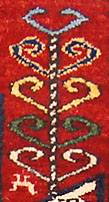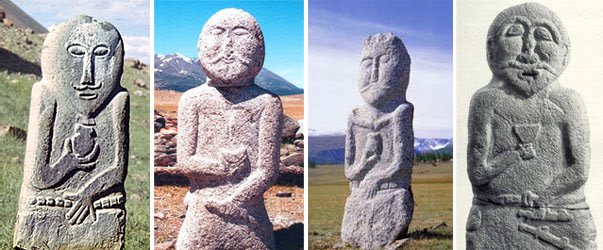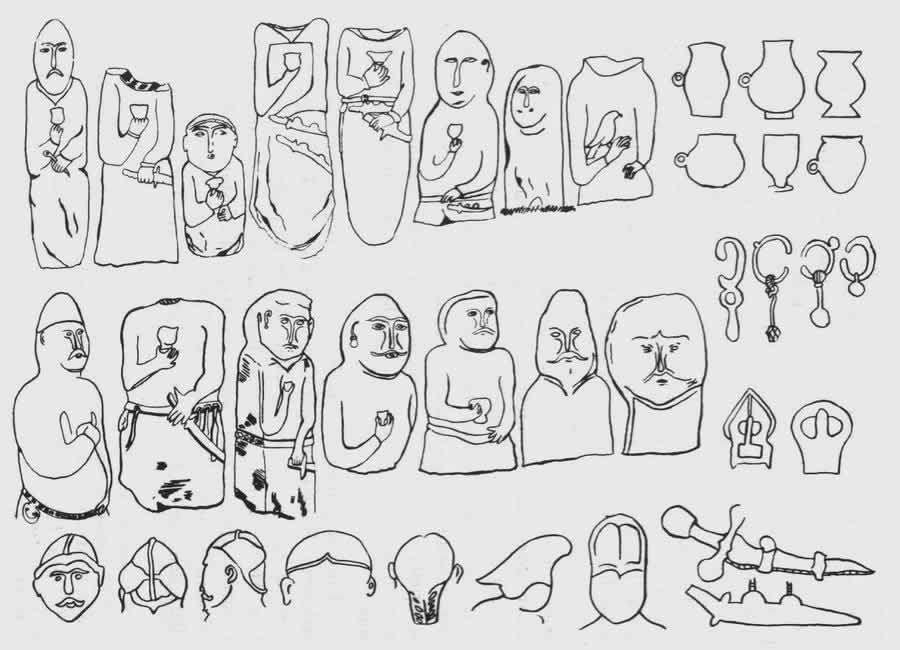|

Sewan 'balbal' type of medallion
|
Bordjalou
Qizil-Kilise rug (so
called Sewan Kazak)
CODE: KZSW11
Size (metric): 159x198cm
Size (ft): 5'2"x6'5"
Area: 3.14 m2
Density: 110 000 knots per square meter, totally ~350 000 knots
Weaving period: 3 months
Colors: madder red, navy blue, Persian blue, gold
yellow (pomegranate rinds+weld), variagated pine green, natural ivory, natural
brown.
Dyes: 100% natural dyes:
madder,
weld
(Reseda Luteola),
indigo,
pomegranate skins,
walnut husks,
natural brown sheep wool, natural ivory sheep wool
- all are eco-friendly and non-toxic
Materials: Handcarded and handspun wool for pile, ivory wool warps and
madder dyed red wefts
Handwoven in Azerbaijan
Design: The blood-red field scattered with angular polychrome
stellar flowerheads and life trees around a large mottled grass-green
medallion centred by a small red medallion, in a light blue ground leaf &
arrows motif main border between reciprocal skittle-pattern stripes
The Sewan Kazaks are known to have been made by Azeri Turks in the area
between the borders of today's Georgia and Armenia (Mountainous Borchali
or Nothern Lori). These Kazaks are distinguished basically by the unique
shape of the medallion, which appears in all Sewan Kazaks with a very
similar shape. Some refer to these as “Shield” Kazak because of the shape
of the medallion. The medallion is also claimed to be representing a
warrior in a thick felt cloak, and a big shaggy papaq (cap) that made of
sheep wool, holding a shield. Karapapakh tribe, descended from Kipchak - a
medieval Turkic tribal confederation - wove most of the known antique "Sewan"
rugs. Kipchaks are known as the makers of stone stelaes (balbal). These
figures were made for different purposes by all the ancient Turkic
nations, to immortalize their ancestors, to honor the heros or kings, or
to memorize a deceased person.The same tradition
was continued by Karapapakhs applying the motif to their carpets. See
images |

"Tree of Life" ornament
|







